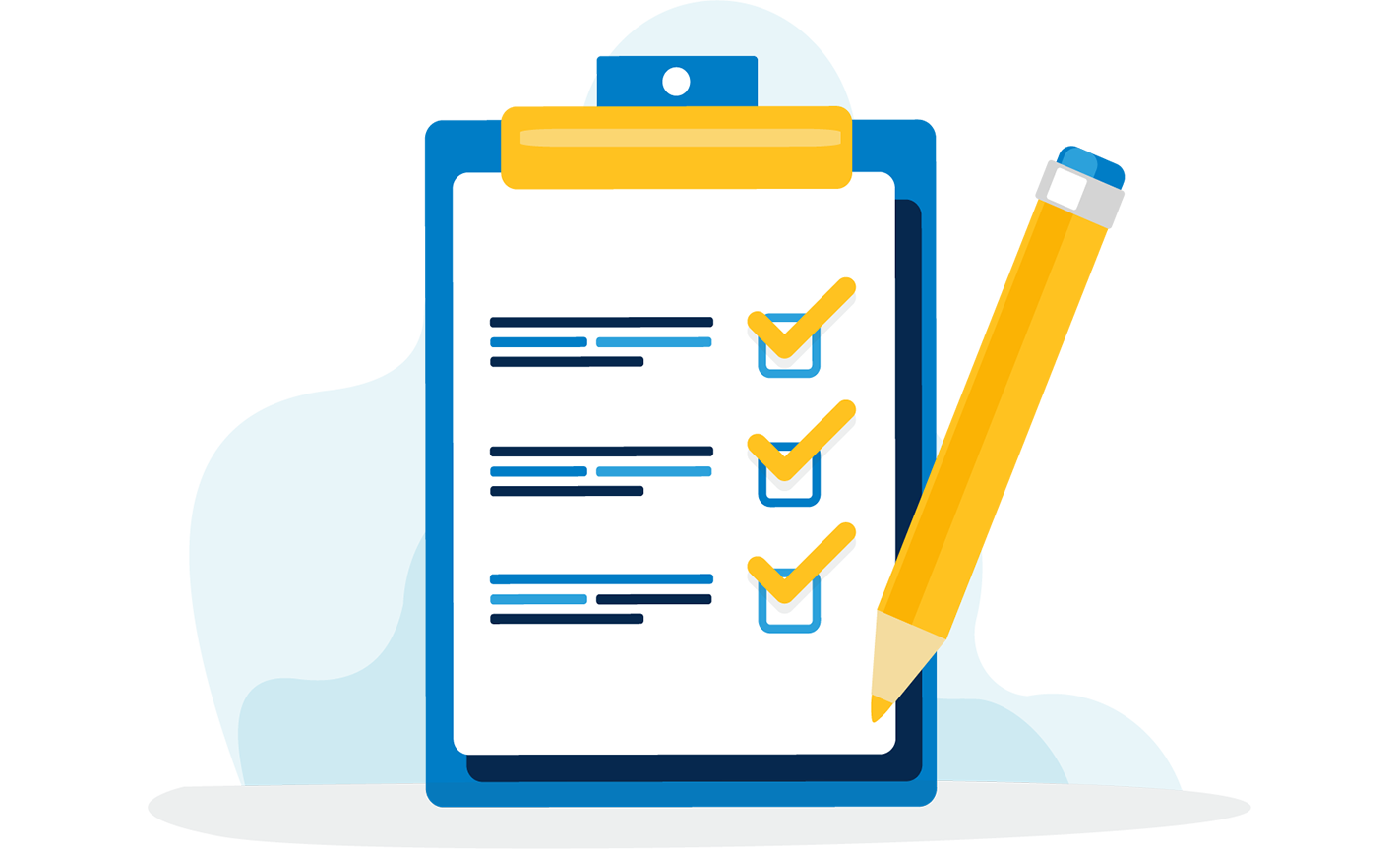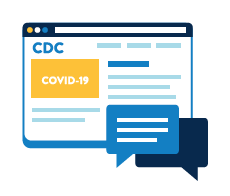Work with the local health department and community partners to implement response plans.
Crisis Playbook
Human Resources
Times of crisis are an opportunity to show your employees how much you care. The first and most important way is to educate and equip them with everything they need to protect themselves and their families. In this guide, you will learn about all the new benefits available for employees and employers that make it easier for your team to care for their family.
Protect EMPLOYEES & THEIR FAMILIES
Stop the spread
Employees who are confirmed to have COVID-19 or who have a sick family member at home, should immediately notify their employer and everyone they came into contact with, so they can follow the CDC guidance for how to conduct a risk assessment of their potential exposure.
Inform others of potential exposure
Employers should inform fellow employees of their possible exposure to COVID-19 in the workplace, while maintaining confidentiality, as required by ADA. Employees exposed to a co-worker with confirmed COVID-19 should refer to CDC guidance for how to conduct a risk assessment of their potential exposure.
Care for the Sick
When employees get sick, they should follow CDC-recommended steps, which means they stay home, except to get medical care. Learn what to do if you are sick.
Stay home
Employees should not return to work until the criteria to discontinue home isolation are met, in consultation with healthcare providers and state and local health departments. The new family act requires paid sick leave for those infected and caring for others.
Get up to speed
Research your workers compensation and health insurance policies to get up to speed with what’s covered and how you can better serve your sick employees and their families.
Quick Tips: STAY INFORMED
Follow the U.S. Center for Disease Control and Prevention (CDC) Guidelines for Coronavirus (COVID-19)
This site provides the most up-to-date information that can help you protect your dealership & the families you serve
“Train people well enough that they can leave, treat them well enough so they don’t want to.”
Richard Branson
Create a SKELETON STAFFING PLAN
Prepare a strategy to manage the business in an environment with high absentee rates. Have contingency plans to run your operations with 25%, 50%, 75%, and 100% less employees than you have today.
Create a HR DECISION TREE
Develop a HR decision-tree
Create a plan that ensures the survival of your business if your revenue is cut by 25%, 50%, 75% or 100%. Create a decision tree that defines what you’ll do with payroll at each stage of the crisis.
Options to manage and reduce payroll:
- Maintain 100% of payroll
- Cut compensation by 25% and top out execs at $100k (ppp lilmits)
- Furlough employees
- Lay off employees
- Leverage contractors when needed
Lay-Offs and Furloughs
If lay-offs/furloughs are necessary:
- Develop a detailed communication plan for employees. Ensure that it covers any requirements for notification under Worker Adjustment and Retraining Notification Act (WARN)
- Make sure your team follows all laws, regulations and policies with respect to employee entitlements, such as severance pay, accrued vacation and sick day payouts.
- Communicate with former employees in terms of benefits administration, reference requests, verification of employment and, possibly, responding to lawsuits. Impacted employees will also want to know when they can expect to return to work.
Compassionate Support
Regardless of what you choose to do, prepare a strategy and a process to do it with compassion. Make all efforts possible to educate and equip the families you serve with the unemployment resources that are available to support them after termination.
Execute on Human Resources RESPONSIBILITIES DURING COVID-19
Review & Understand the CARES and FFCRA legislation to the best of your ability
Make sure that your Legal and HR advisors are experts in the legislation and give recommendations based on an in depth understanding of CARES and FFCRA
Review HR Practices
Ensure they are consistent with public health requirements and state and federal workplace laws regarding the Coronavirus. (For more information on employer responsibilities, visit the Department of Labor and the Equal Employment Opportunity Commission)
Sick Leave and FMLA – Family First Coronavirus Response Act (FFCRA)
- Review and comply with the new Families First Coronavirus Response Act, to provide employees with paid sick leave or expanded family and medical leave. FAQ’s from NADA
- Note: The FFCRA provides for emergency paid sick leave and emergency leave for parents who cannot work due to having to care for children whose schools or daycare providers have closed. Employers with less than 500 employees are generally entitled to receive 100% reimbursement for the costs of the paid emergency paid leave they provide in the form of tax credits.
- The FFCRA provides for paid leave to employees that have been directly impacted by the Coronavirus
- Impacted employees who require leave must be paid 100% of their pay if they are quarantined, pursuant to a government order or on advice of a doctor.
- Impacted employees who require leave must be paid 2/3 of their pay if they are unable to work due to a need to take care for an individual or child impacted by the Coronavirus
- Employers will receive reimbursement for these wages as tax credits
- Employers may not discharge, discipline, or otherwise discriminate against any employee who takes paid sick leave under the FFCRA
CHECKLIST
Steps to take
During an Outbreak
Follow up
After an Outbreak
Action Plan
Actions
| Action | Who | When |
|---|---|---|
| Schedule meeting to review & distribute the Corona Care Guide for Businesses | ||
| Share & distribute Corona Care Guide for Families with all your employees, customers, vendors, partners, and community via email, website, and social media | ||
| Implement training & processes to protect health and wellness, at work and home | ||
| Educate & emphasize prevention best practices including social distancing,respiratory etiquette and hand hygiene by all employees | ||
| Follow the U.S. Center for Disease Control and Prevention (CDC) for Coronavirus (COVID-19) | ||
| Provide instructions to employees of what to do if they get sick | ||
| Establish a process for employees to inform the HR department about possible exposure & create a policy for sick employees returning to work | ||
| Develop your HR Plan. Here is what should be included | ||
| Review and update HR practices (for more information visit the Department of Labor and the Equal Employment Opportunity Commission) | ||
If lay-offs/furloughs are necessary:
| ||
| Review and comply with the new “Families First Coronavirus Response Act.” Learn about the rules here. |
Resources
Corona Care Guide for Businesses
Corona Care Guide for Families
Corona Crisis Playbook
Guide to Human Resources
10 New Benefits for Small Businesses
Tax & Unemployment Benefits
Workplace Safety
Wages, Hours and Leave
Families First Coronavirus Response Act (FFCA)
Group Health Insurance
Unemployment Insurance
Workers’ Compensation
Discrimination
Medical Privacy
Taxes
Legislation
Department of Labor
EEOC






